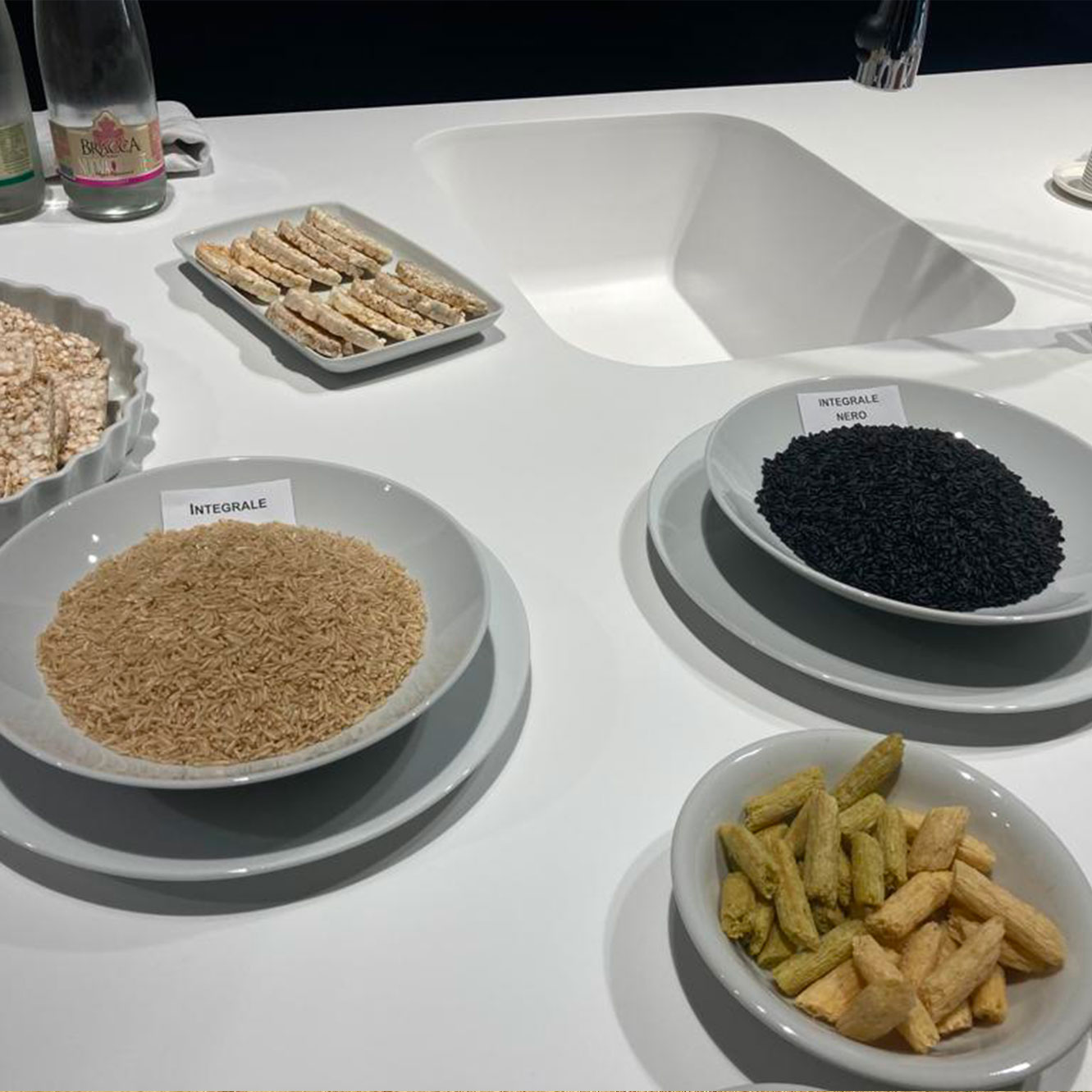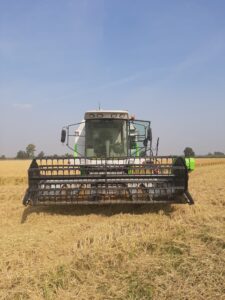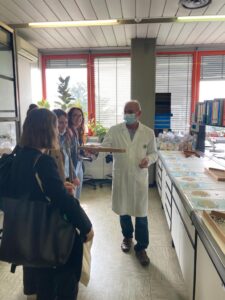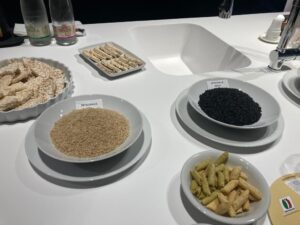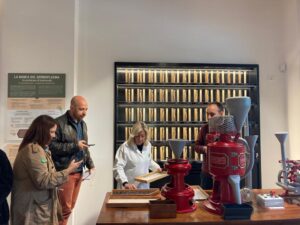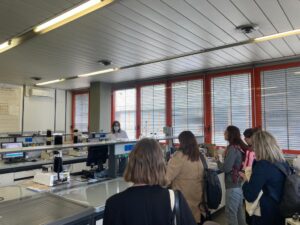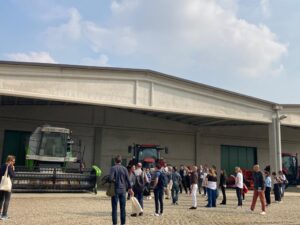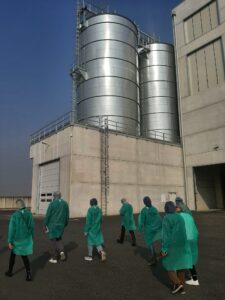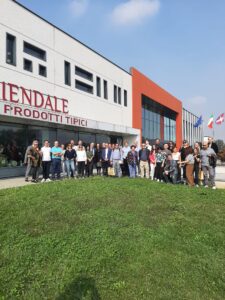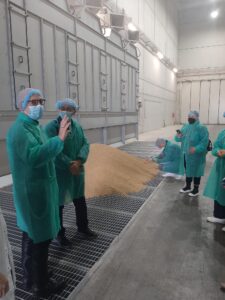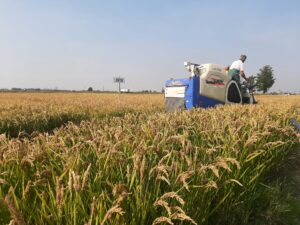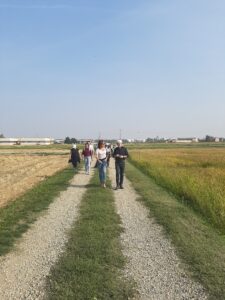Italian Lomellina rice at the centre of the 2nd Study Trip
Lomellina, a flat area in Northern Italy between the rivers Po, Ticino, and Sesia, an ideal place to cultivate rice, was the chosen location for the second study trip organised as part of the project Sustainable EU Rice – Don’t Think Twice.
Journalists, bloggers, chefs, and those directly involved in the rice production chain coming from Italy, France, Germany, and Portugal, met at the Centro Ricerche sul Riso (Rice Research Centre) of the Ente Nazionale Risi (National Rice Body) in Castello d’Agogna (Pavia) where on 5 and 6 October they attended multiple activities promoting the quality and sustainability of rice cultivated in Europe.
After the welcoming from Roberto Magnaghi, CEO of Ente Nazionale Risi, participants were divided into groups and in turns took part in lab activities and guided tours. In the educational room, guests assisted to a demonstration on the transformation processes undergone by rice, from paddy to the white grains we are used to buying in stores. This was followed by the yield test, which measures the percentage of complying grains in a batch of rice, and a presentation on the varieties of Italian rice and cooking practices. The visit to the educational room ended with an immersive journey through Lomellina and its history in a video documentary with VR headsets.
Participants then moved to the Commodity Chemical Laboratory where the managers of each process demonstrated how the different types of rice are analysed from both a chemical and commodity point of view. In particular, they explained how rice biometrics are measured – length, width and thickness of the single grains – in order to classify rice as Long A – Long B – Round – Medium; how amylose content is measured, to obtain important information on how rice reacts to cooking and its texture; how to determine the consistency and stickiness of cooked rice; how parboiling treatments work and how rice grain defects are identified and analysed. In fact, as a natural product rice often has defects linked to the maturation process, climate conditions, disease, insects, as well as the industrial production process. An important stop during the visit at the Research Centre was the Germplasm Bank: a cell that stores around 1500 different accessions of rice of all varieties grown in Italy from the mid-1800s to date. The bank has an inestimable historical value as it allows researchers to set up the best genetic improvement programs and develop new rice cultivars based on sound knowledge and experience.
The second day of the study trip started with a visit at the rice production plant Risiera SP SPA, in Stroppiana (Vicenza), where guests witnessed the different processing stages, from paddy to white rice packaging. The company produces around 120,000 tonnes of rice per year and operates in a very sustainable manner, reusing all by-products in sectors such as eco-construction (chaff), pet food (green grain), human and animal food industry (broken rice), and livestock farming (husk).
In the afternoon, guests were taken to the fields near the Research Centre to visit the experimental plots, the catalogue fields and assist to the harvesting, first with the plot combine and then with a larger machine. The event was an opportunity for all involved in the sector to interact and exchange information, expand their knowledge on Italian rice cultivation, and a pleasant occasion to taste risottos prepared with typical seasonal ingredients such as pumpkin and porcini mushrooms.


